Best Online Document Sharing Platforms in 2025
Easily share documents while keeping them organized and secure.
A fundamental part of team collaboration revolves around sharing documents and files – project plans, memos, HR policies, standard operating procedures, software documentation, employee onboarding checklists, and so on. And as more and more companies embrace remote work, asynchronous communication through document sharing is also becoming a valid alternative to unproductive Zoom meetings and distracting real-time chat.
There are numerous ways to share files and documents – but not all of them are secure and organized. In this article, we will take a closer look at the different online document sharing apps and workflows.
Why efficient document sharing is important
The problem is that many organizations don't have a structured approach to sharing documents. Important files end up scattered across inboxes, chat messages, and shared drives and no one knows which version is the latest one.
According to recent studies, companies without a proper document sharing system often experience costly productivity losses:
On average, employees spend 50% of their time working with documents and share 6 documents daily.
92% of them share documents primarily via email.
46% say it’s time-consuming and challenging to find the documents they need.
83% must recreate existing documents since they can't find them.
Document issues account for over 21% of daily productivity loss.
Time wasted on document-related issues costs organizations an average of $20,000 per worker, per year.
It doesn't have to be like this – and the document sharing platform you choose for your team is often what sets you up for success or failure. But with dozens of options out there, which tool should you pick?
10 essential features for any online document sharing app
Before evaluating specific solutions, it's important to understand what to look for in a document sharing app. While every team and company may have their own unique requirements, most great document and file sharing tools offer many of the following features and benefits:
An intuitive way to organize your shared documents
A transparent access management system to keep your documents safe and secure
Mobile support to be able to access your shared documents on the go
Fast and reliable search
An easy way to collaborate on your shared documents
Version history with the option of restoring earlier versions of your documents
Integrations with other collaboration tools, such as Slack
Content export options in different formats
Best online document sharing platforms
To make your decision easier, we have put together a list of the 6 best online document sharing tools:
Each one of these solutions comes with its own unique strengths and feature sets. Depending on the type of documents you are planning to share, some of these tools may fit your needs better than others. For example, if you run a content marketing agency, you may require real-time collaboration and easy content sharing, while if you are a healthcare provider, you may need a tool that complies with HIPAA regulations and offers secure sharing of patient information.
Learn more about your options and find the best document sharing app for you and your team.
1. Nuclino
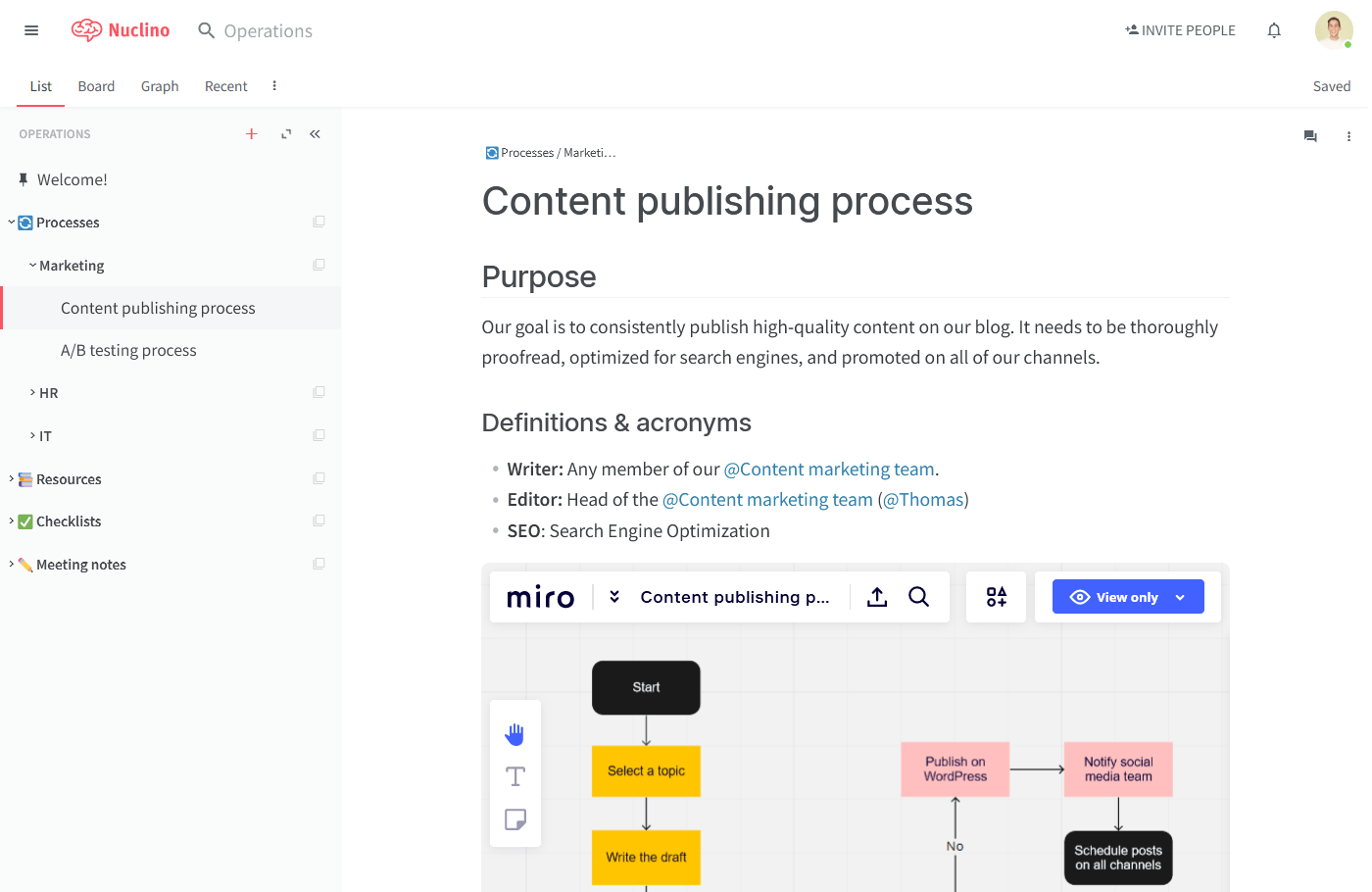
If you are looking for a collaborative and user-friendly document sharing tool, look no further than Nuclino. It's a unified workspace where teams can share and collaborate on documents, organize knowledge, manage projects, and more. Nuclino is highly versatile yet intuitive, allowing even non-technical users to productively use it from day one.
You can create real-time collaborative documents directly in Nuclino and instantly share them with your team. The visual drag-and-drop editor of Nuclino offers essential formatting options, enabling an easy and fast editing experience and making your documents look clean and consistent. Media files – slides, spreadsheets, diagrams, videos, and more – can be uploaded or embedded directly inside your documents, so you can keep everything organized and never lose context.
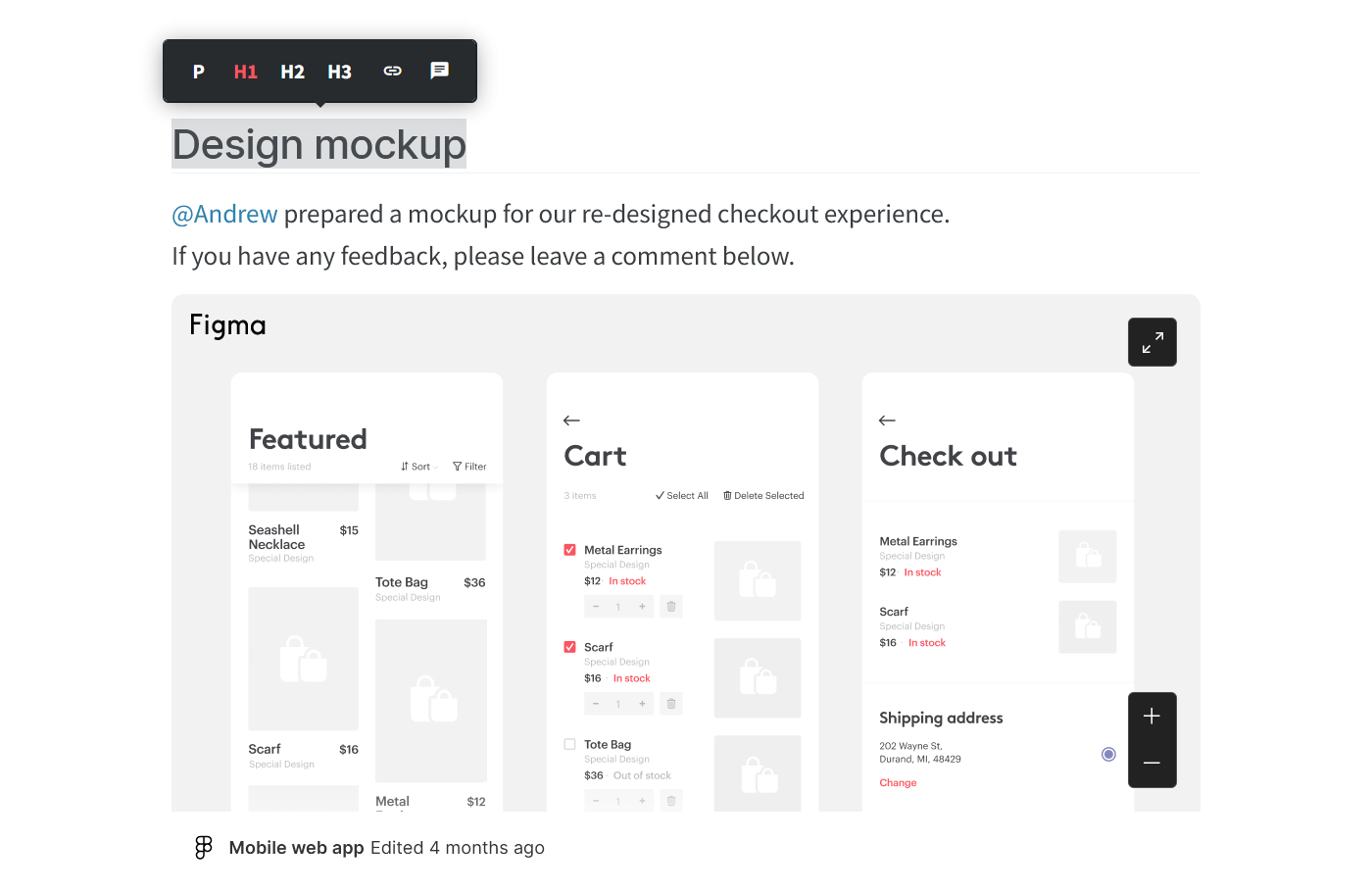
What makes Nuclino stand out among many other online document sharing platforms is its unique approach to organizing documents. Instead of relying on the traditional folder system, where important documents can easily get lost, Nuclino allows you to link related documents together. It works like your own internal Wikipedia, making it easy to browse and explore.
Simply type "@" and the name of the document you'd like to link to.

You have full control over who has access to your shared documents. You can create public workspaces for documents that should be shared with your entire team, and invitation-only private workspaces for documents that should be accessible to selected team members only. User roles can be used to decide who should be able to edit the shared documents and who should only be allowed to read or leave comments on them.
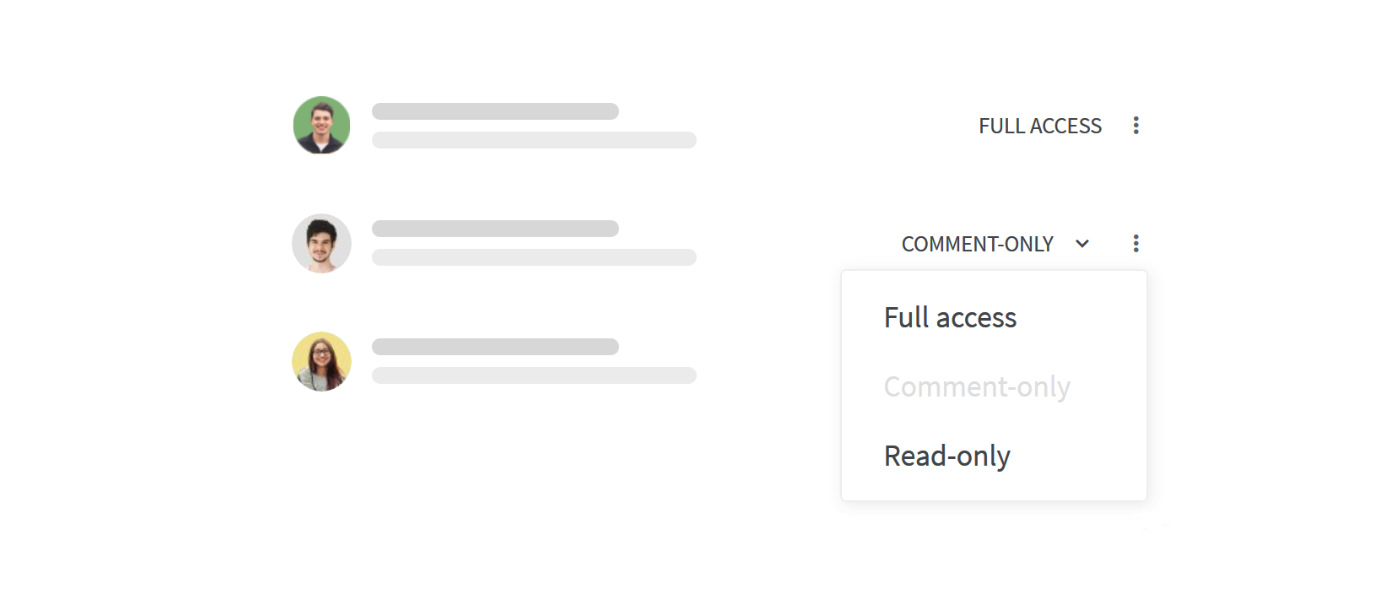
Individual documents can also be easily shared publicly with anyone, without needing a Nuclino account.
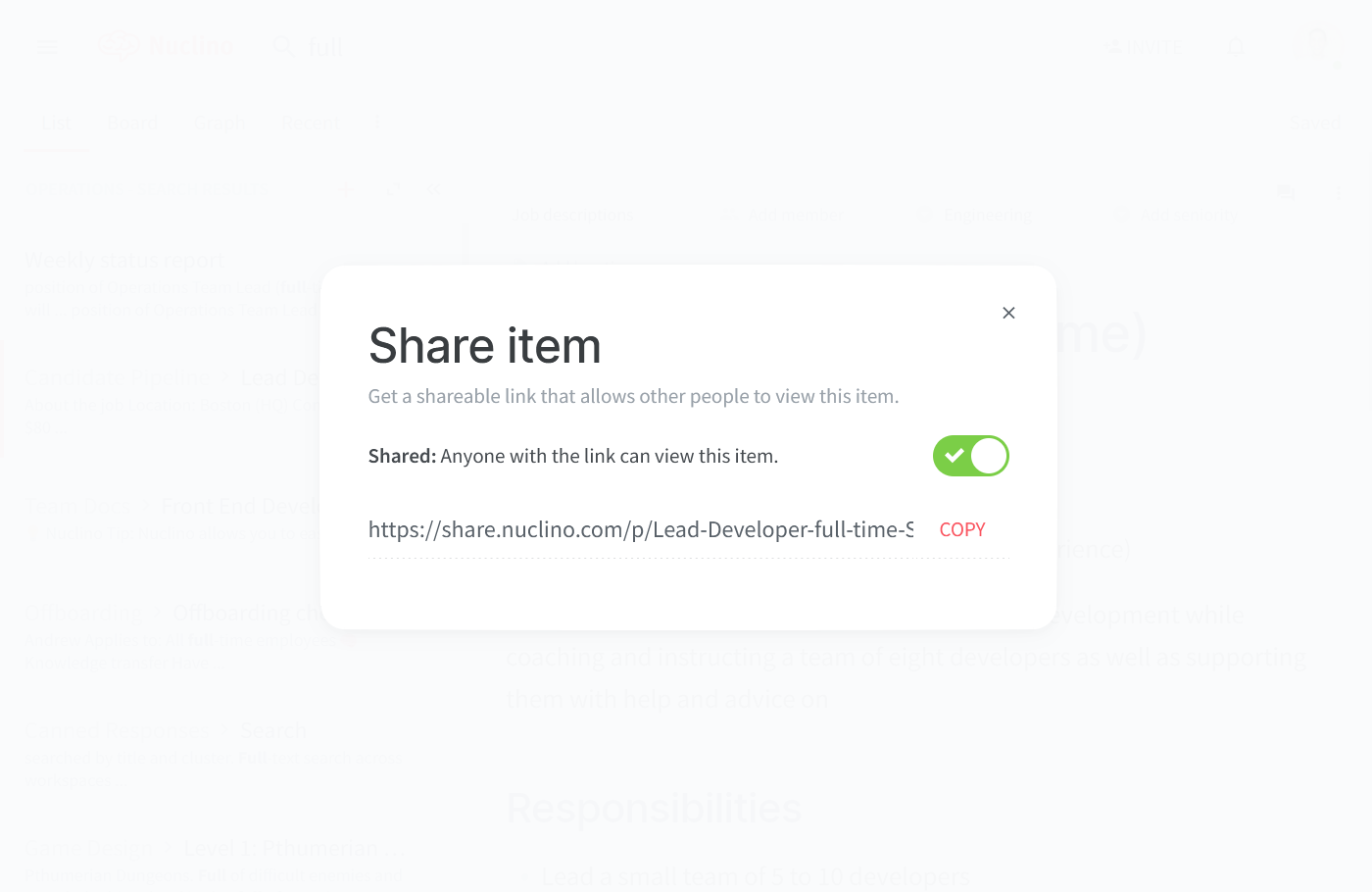
But Nuclino is more than just a document sharing tool. You can organize your docs in multiple visual ways, including a nested list, a Kanban board, a table, or a graph. This makes Nuclino a great solution for a wide range of use cases beyond simple documentation, including knowledge sharing, employee handbooks, employee onboarding and offboarding, sprint planning, process documentation, and many more. It works like a collective brain, allowing you to bring all your team's work together in one place and collaborate without the chaos of files and folders, context switching, or silos.
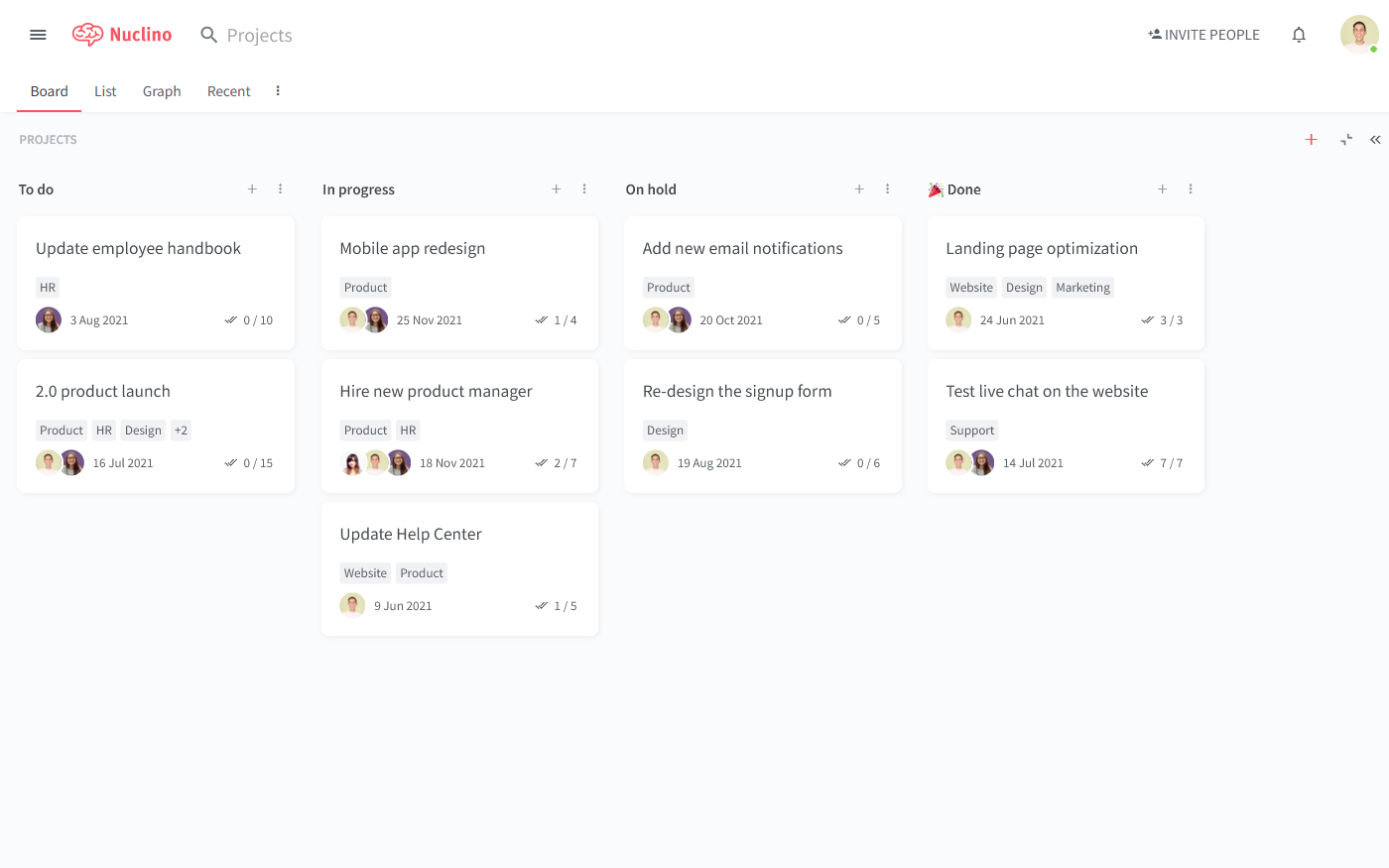
What users say about Nuclino:
"Anyone trying to organize a series of documents/notes in an organization should check out Nuclino because it fits the bill. The design of the product is so good that it's actually fun writing new notes/docs in the app. Live multi-user collaboration rounds out the feature set."
2. Google Drive / Google Docs
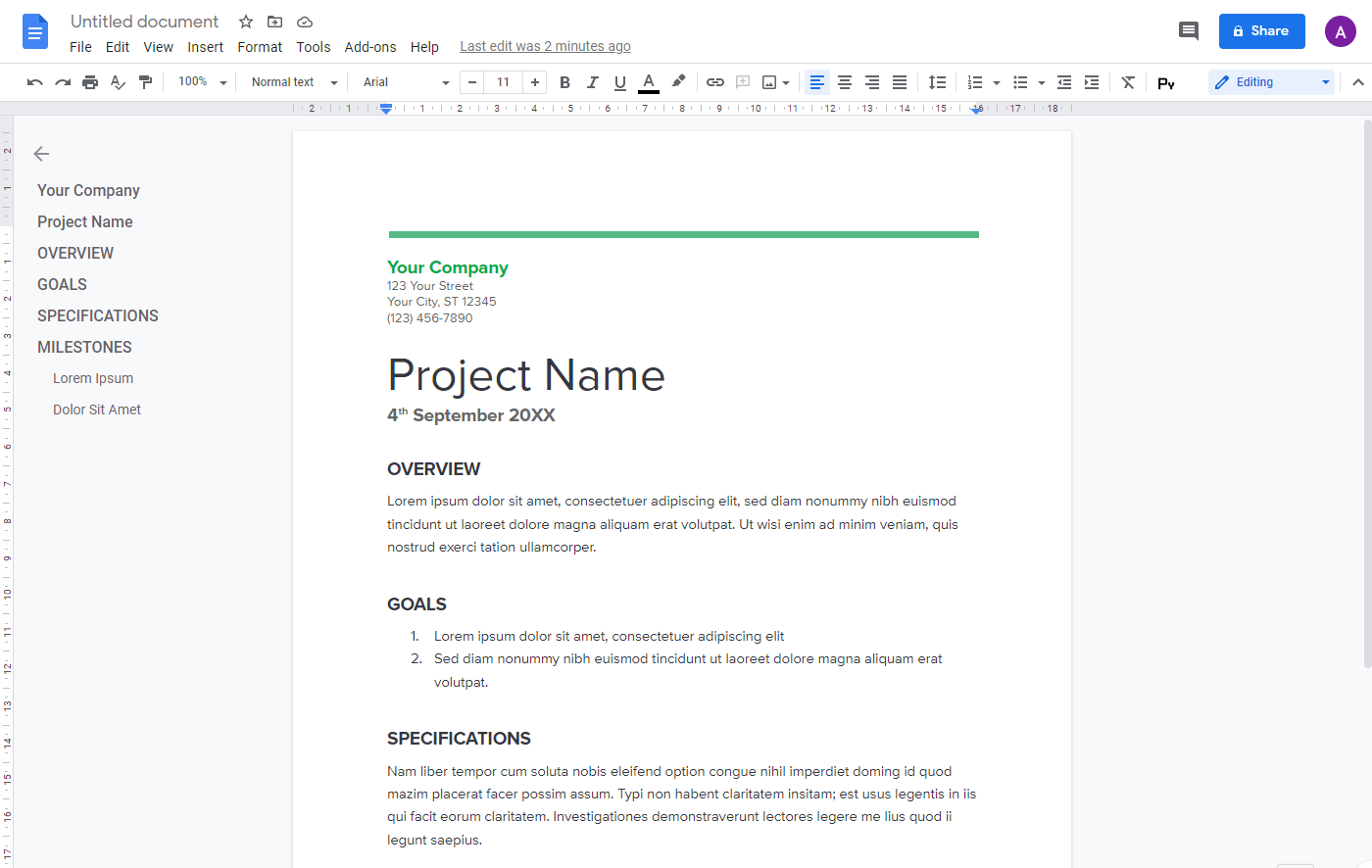
No list of file and document sharing apps would be complete without Google Drive and Google Docs. These tools transformed the way businesses collaborate many years ago and remain widely popular today, with millions of users worldwide.
While Google Drive and Docs may not be the most modern solutions, they're free, flexible, and user-friendly, making them a great option for smaller teams with limited budgets.
What users say about Google Drive and Google Docs:
"Google Docs is for document sharing what Slack is for team communication. Overall, it is a godsend for document productivity in a team setting. Not long ago, the process consisted of saving local copies on your desktop, making a change, saving it with a new name, sending it over email, and then making sure the right document was stored in the cloud. It's primarily due to Google Docs that this paradigm has changed."
3. Zoho Docs
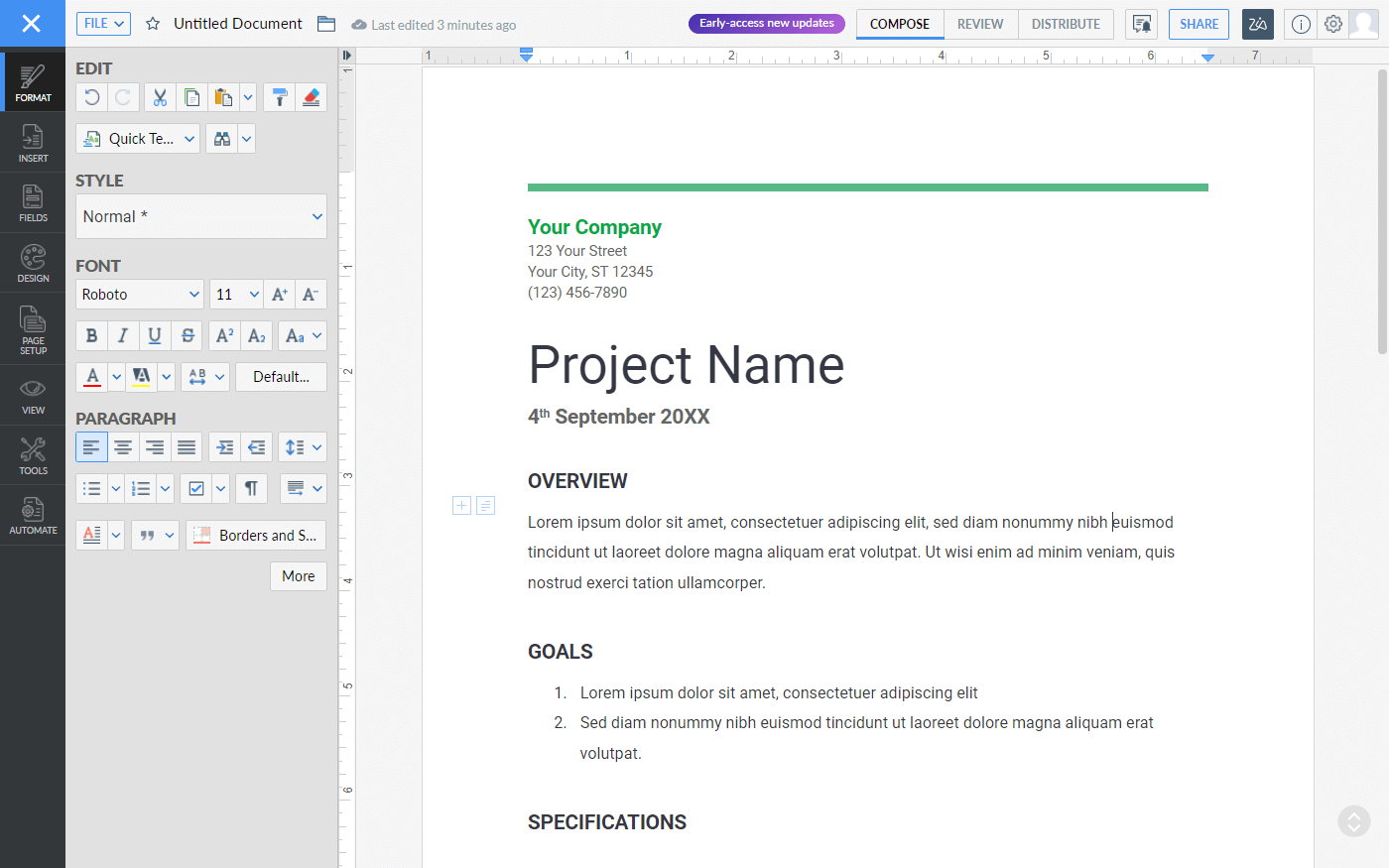
Another notable document sharing platform is Zoho Docs. It's a part of Zoho Office Suite and is often used as a Google Drive Google Docs substitute.
Zoho Docs encompasses several apps, including Writer, Sheet, and Show, allowing you to share a variety of files, such as text documents, spreadsheets, presentations, and more. The main downside of Zoho Docs is that it isn't as ubiquitous as Google Docs. To be able to share a document through Zoho Docs, every participant will need a Zoho account, which may add friction to your document sharing workflow.
What users say about Zoho Docs:
"Zoho Docs is absolutely perfect for sharing and storing documents within my team. We are able to upload any documents that we can think of to make sure that they are safe and shared with the entire team. I would highly recommend Zoho Documents to any team that is looking for a cost-effective and easy way to share and store their documents for their small business."
4. nTask
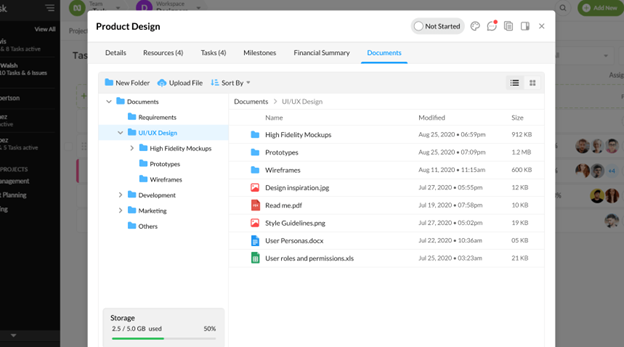
While nTask is primarily designed for task and project management, it can also be used as a platform for sharing documents. With nTask, you can easily store, edit, and manage all of your team's files and documents in one place.
Its feature set also includes such functionality as risk management, Kanban boards, meeting management, issue tracking, calendar integration, and much more. At the same time, nTask is fairly user-friendly and easy for new users to get the hang of.
If you like the idea of managing tasks and sharing documents within one platform, give nTask a try.
What users say about nTask:
"It's really a hidden jewel because you can take advantage of most of the features for free, and it offers many of the same functions as larger and much more expensive project management tools."
5. Dropbox
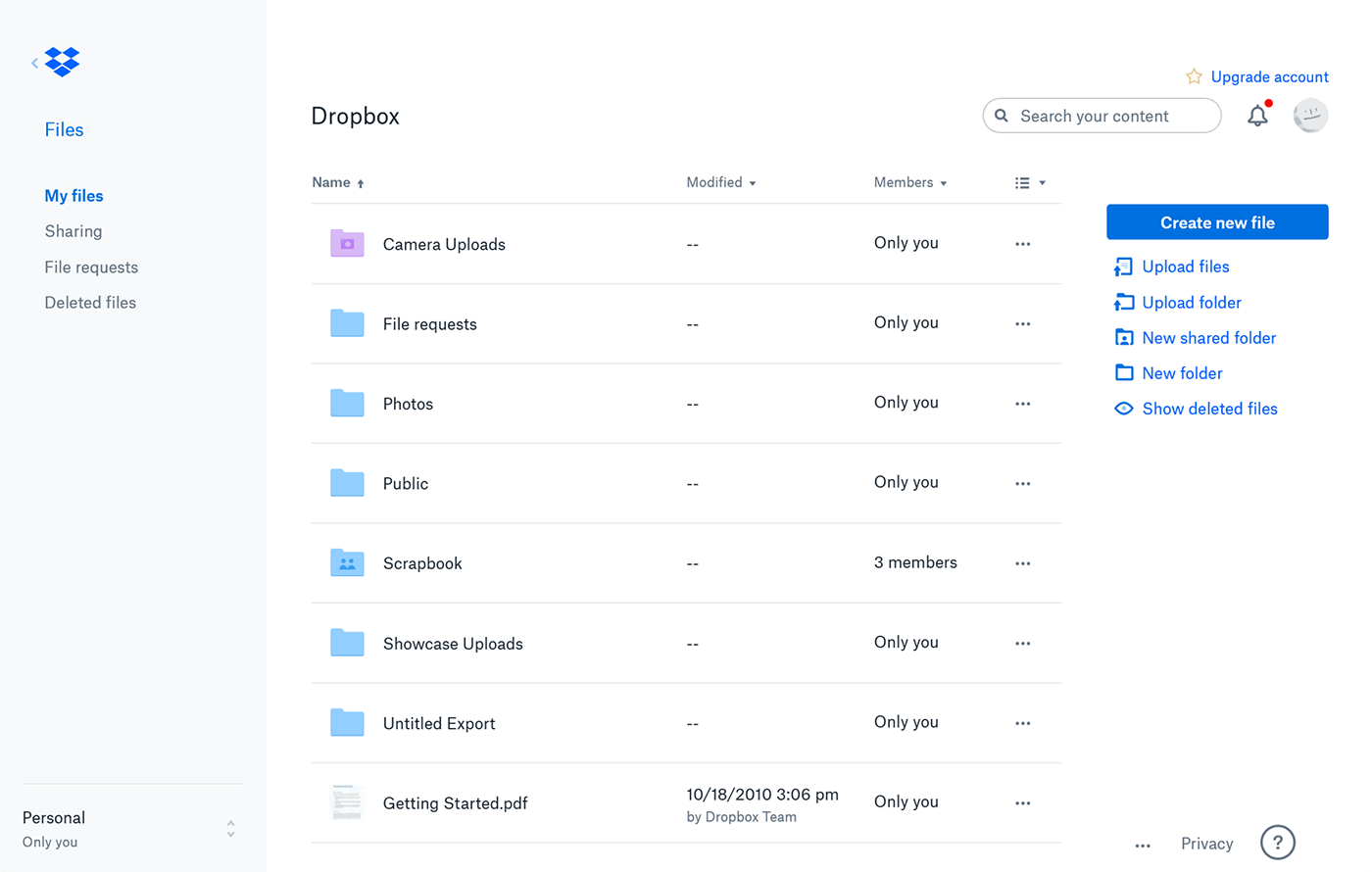
Another giant of the file and document sharing space is Dropbox. It's a fairly easy-to-use tool that works across platforms, allowing you to easily sync your files on all your devices.
You can share documents and folders with specific people using a link, or make them public so that anyone with the link can access your documents. It's a convenient way to send files without using email attachments.
What users say about Dropbox:
"I like that Dropbox syncs so well across devices. The majority of the time it is easy to locate all the files that we need, simple to share documents, and it integrates well with our encryption software."
6. Quip
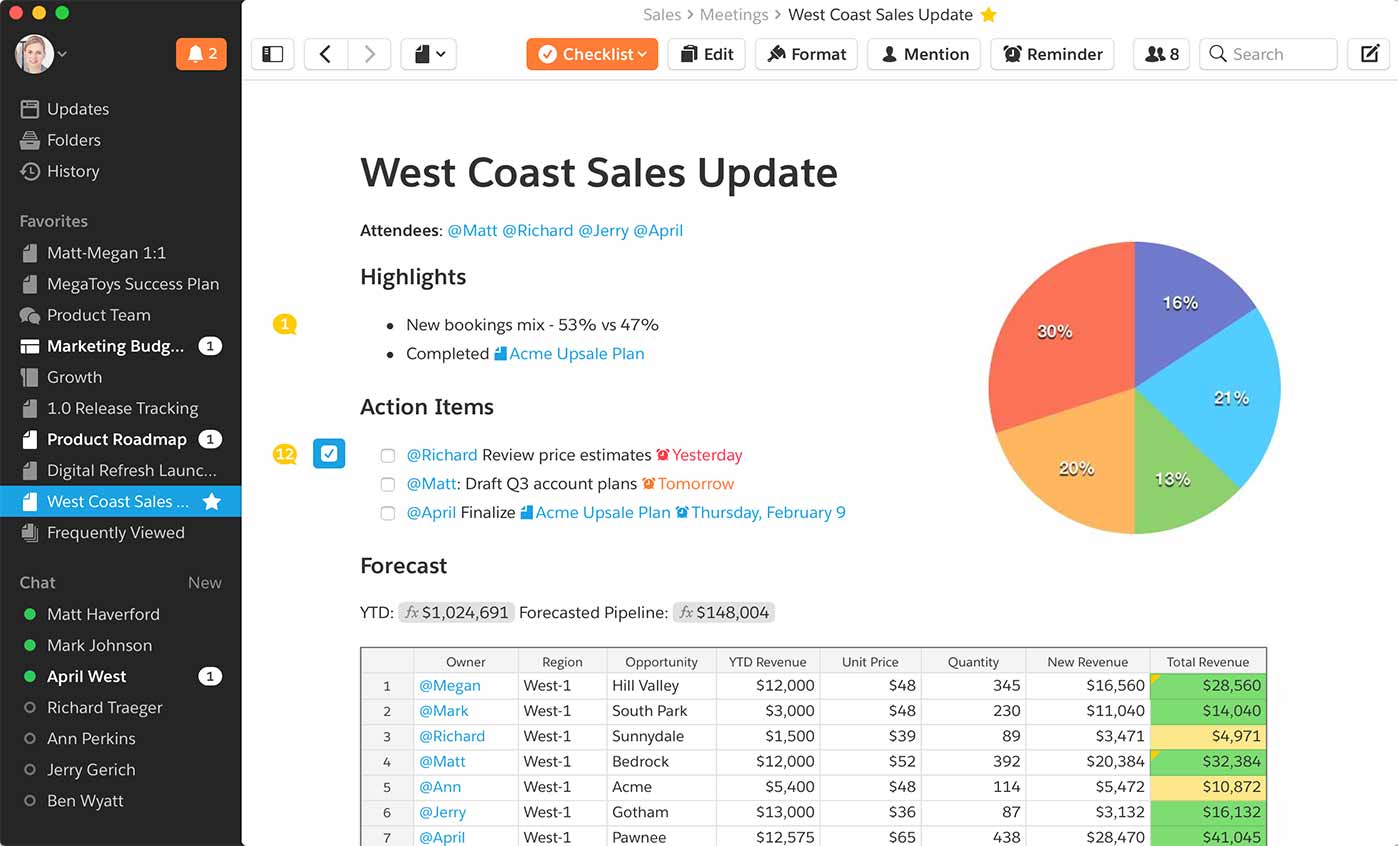
Quip is an online document sharing tool that allows you to create, share, and collaborate on documents, spreadsheets, checklists, and presentation slides, in one tool. It is owned by Salesforce and truly shines when used in combination with the Salesforce CRM.
Note that Quip is mainly geared towards larger enterprises and is more expensive than other document sharing apps on our list.
What users say about Quip:
"Quip is a great collaboration tool that is something similar to Slack, Google Docs and Google Sheets all wrapped up into one. You can easily upload shared documents to folders and limit who can see the documents as well as who can edit/view the documents."
Find the right document sharing platform for you
This is by no means an exhaustive list. There are many other great online document sharing platforms that deserve an honorable mention, including tools like Microsoft OneDrive and Box. There is no objectively "best" solution, and the best choice depends entirely on the type of documents you are planning to share and your preferred workflows. We hope this list has made the decision a little easier.
Ready to get started?
